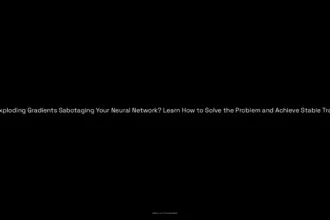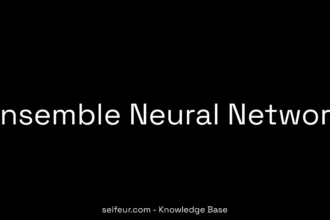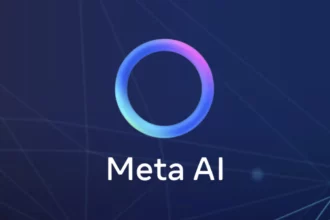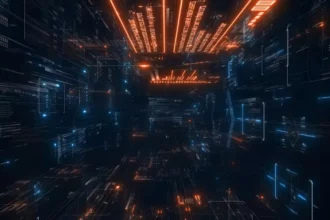Are you ready to dive into the world of KerasClassifier? If you’re looking for a high-level deep learning API that packs a powerful punch, then you’ve come to the right place! In this blog post, we’ll unravel the mysteries of KerasClassifier and explore its incredible capabilities in classification tasks. From its seamless integration with TensorFlow to its advantages over scikit-learn, we’ll cover it all. So, fasten your seatbelts and get ready for a thrilling ride into the fascinating realm of KerasClassifier!
Table of Contents
ToggleUnderstanding KerasClassifier
Imagine holding a magic wand that lets you blend the robustness of Keras, a high-level neural networks API, with the versatility of Scikit-learn’s classifier interface. This is precisely what KerasClassifier offers to machine learning practitioners. It’s a wrapper class that acts as a bridge between the convenience of defining models in Keras and the systematic approach to model evaluation and parameter tuning provided by Scikit-learn. Whether you’re a novice or a seasoned data scientist, KerasClassifier makes it easier to experiment with different architectures and hyperparameters, speeding up the journey from concept to a finely-tuned model.
| Feature | Details |
|---|---|
| KerasClassifier Functionality | Integrates Keras models with Scikit-learn’s classifier API |
| Model Parameters | Allows passing of parameters to the Keras model function |
| Hyperparameters | Facilitates tuning of epochs, batch size, and more |
| Base Framework | Runs on top of TensorFlow, Theano, or CNTK |
| User Experience | Designed for fast experimentation and ease of use |
| Processing Capabilities | Compatible with both CPU and GPU environments |
With Keras, crafting a neural network is akin to stacking Lego blocks; it’s modular, extensible, and intuitive. KerasClassifier inherits these qualities, offering a user-friendly gateway to deep learning. By harnessing the power of TensorFlow, Theano, or CNTK as its backend, KerasClassifier ensures that your models can scale from a humble laptop CPU to a formidable GPU cluster with ease.
The real beauty of KerasClassifier lies not just in its ability to streamline model creation, but also in how it simplifies the process of model tuning. Hyperparameters like the number of epochs or the batch size are no longer static values buried in code. They become dynamic variables that you can optimize using Scikit-learn’s grid search or random search capabilities, turning the arduous task of hyperparameter tuning into a systematic and manageable endeavor.
Whether you’re building a simple prototype or deploying a complex deep learning model, KerasClassifier empowers you to do it with confidence and speed. It stands as a testament to the collaborative nature of open-source tools, bringing the best of Keras and Scikit-learn into a harmonious union that accelerates the path from data to insights.
As we prepare to delve deeper into the world of Keras, remember that KerasClassifier is your ally, designed to make the machine learning workflow as seamless as possible. In the upcoming sections, we will explore how Keras, as part of the TensorFlow ecosystem, continues to push the boundaries of what’s possible in deep learning.
Keras: A High-Level Deep Learning API
In the realm of machine learning, where the complexity of models can often be daunting, there emerges a beacon of simplicity that illuminates the path for both novices and seasoned practitioners alike. This beacon is none other than Keras, a high-level, deep learning API that is not only developed by the tech giant Google but also revered for its user-centric design. Keras, a name inspired by the Greek word “κέρας” meaning horn, symbolizes the power and robustness it brings to the field of neural networks, much like the horn that adorned the mythical creatures of ancient lore.
With its inception aimed at facilitating fast experimentation and research in neural networks, Keras stands out as an intuitive and accessible API. It’s a bridge that connects ideas to implementation, allowing for the smooth transformation of theoretical concepts into practical applications. Wrapped in the comfort of Python, Keras is a tool that democratizes deep learning, making it approachable without sacrificing the depth of its potential.
The genius of Keras lies in its versatility. It is a chameleon in the computational jungle, seamlessly adapting to various backend engines such as TensorFlow, Theano, or Microsoft Cognitive Toolkit (CNTK). This flexibility ensures that Keras remains an inclusive framework, welcoming developers who have preferences for different computational platforms. Whether your machine whispers through the CPU or roars with the GPU, Keras ensures that your deep learning models run efficiently, tapping into the full potential of the underlying hardware.
But Keras is more than just a high-level interface; it’s a symphony of simplicity and power. By abstracting the complexities of neural network layers, activation functions, and optimizers, it allows for a design experience that focuses on the architecture rather than the scaffolding. This is why Keras is not just a tool for the elite data scientists but also the go-to choice for hobbyists and researchers who wish to experiment and innovate without getting entangled in the web of intricate coding.
At its core, Keras embodies the philosophy of enabling rapid prototyping. It does so by offering a coherent and consistent API that is as forgiving as it is flexible. The creation of a neural network model in Keras is akin to crafting a narrative; it’s a process of layering ideas, one over the other, until a full story emerges. Each layer in a Keras model serves a purpose, whether it’s discerning patterns in data or making pivotal decisions, and together, they form a cohesive narrative that can unearth insights from a sea of information.
The community behind Keras is a testament to its impact and popularity. A vibrant tapestry of developers and researchers contributes to its ever-evolving landscape, ensuring that Keras not only keeps pace with the advancements in deep learning but often leads the charge. With extensive documentation, a plethora of tutorials, and a supportive community, Keras stands out as a beacon of knowledge-sharing and collaboration.
As our journey through the world of machine learning continues, Keras remains a trusted companion, offering a blend of simplicity and sophistication. Its integration with TensorFlow, as we will explore in the following sections, further amplifies its capabilities, forging a powerful duo that dominates the industry. But for now, let us bask in the elegance of Keras, a high-level deep learning API that has reshaped the landscape of neural networks and machine intelligence.
Keras and TensorFlow: A Powerful Duo
Picture a painter, with a palette of vibrant colors at their disposal, poised to create a masterpiece. In the realm of neural networks, Keras is akin to this palette, offering a spectrum of possibilities for architects of artificial intelligence. This high-level neural networks API, flourishing atop robust platforms like TensorFlow, Theano, and CNTK, provides the tools to transform the complex landscape of machine learning into a canvas of opportunity.
TensorFlow, the brainchild of Google Brain Team, stands as an open-sourced end-to-end platform and library for a plethora of machine learning endeavors. It’s the canvas on which the Keras palette reveals its true colors. Together, they enable developers to paint their problems in the form of models, with strokes of high-level APIs that streamline the building and training process. This fusion empowers practitioners to experiment swiftly, iterate rapidly, and deploy efficiently, without getting entangled in the underlying neural network intricacies.
In this partnership, TensorFlow provides the computational prowess, the raw materials for crafting complex algorithms. Keras, with its user-centric approach, simplifies these materials into manageable and modular blocks, much like a set of easy-to-use brushes for artists of all skill levels. This synergy is not just about ease but also about empowering a broader audience to engage with deep learning, unlocking potentials in fields ranging from autonomous vehicles to personalized medicine.
Classification, one of the fundamental tasks in machine learning, becomes more intuitive with Keras. Whether it’s categorizing emails into spam or non-spam, identifying customer churn, or predicting credit defaults, Keras provides the building blocks for creating models that can learn from data and make informed decisions. Its integration with TensorFlow ensures that these models benefit from the scalability and performance that TensorFlow’s backend engine offers.
By uniting the intuitive interface of Keras with the comprehensive power of TensorFlow, developers and researchers can embark on their machine learning journey with confidence. They can construct, visualize, and optimize neural networks with an ease that was once unfathomable, turning complex data into narratives that drive progress across industries.
As we delve further into the potential of this powerful duo, the way they revolutionize the process of classification in Keras becomes even more evident. In the following section, we will explore the seamless journey from raw data to categorical conclusions, all under the wing of Keras, the artist’s brush in the vast gallery of machine learning.
Keras in Convolutional Neural Network (CNN)
Picture this: a world where machines can see and understand images as we do, a feat made possible by the intricate web of artificial intelligence known as Convolutional Neural Networks (CNNs). Keras, the maestro of simplicity in deep learning, plays a starring role in this visual symphony. It offers an ensemble of tools tailored for CNNs, which are adept at processing structured grid data such as images with grace and precision.
At the heart of CNNs lies the ability to preserve the spatial hierarchy of input data, allowing these networks to recognize patterns with a level of intuition akin to the human eye. Keras amplifies this ability, providing a seamless and intuitive framework for crafting these intelligent systems. Its utility method, “to_categorical”, exemplifies this by transforming class integers into a choir of one-hot vectors, enabling the network to classify with unmistakable clarity.
Imagine a scenario where the number ‘2’ becomes a solo act in an array, like [0, 0, 1, 0, 0, 0, 0, 0, 0, 0], standing out in a zero-indexed lineup. This simple but powerful method is instrumental in achieving remarkable feats such as a 97.4% test accuracy in image classification tasks, showcasing Keras’s prowess in making complex tasks attainable.
The magic of Keras in the realm of CNNs doesn’t stop with data transformation. It extends to the orchestration of layers, each playing its part in the network. Convolutional layers act as the eyes, pooling layers as the concentrators, and fully connected layers as the decision-makers. Together, they form a harmonious ensemble capable of interpreting the visual world in high definition. Keras ensures that each layer collaborates seamlessly, making the construction of these networks not just efficient but a joy for developers and researchers alike.
In the dance of deep learning, where every computation and connection counts, Keras ensures that CNNs perform with elegance and accuracy, making it an indispensable partner in the quest to endow machines with the gift of sight.
The Birth of Keras
In the bustling landscape of machine learning, a new chapter began with the inception of Keras. The seeds were sown within the fertile grounds of the ONEIROS project, a visionary endeavor that aspired to fuse the realms of neuroscience and robotics into an open-ended platform. The project’s name, an acronym for Open-ended Neuro-Electronic Intelligent Robot Operating System, hinted at its ambitious goal to craft a system that could evolve and adapt, much like the human brain.
Keras emerged as a beacon of versatility and simplicity amidst the complexities of deep learning research. In those early days, the quest was to provide a tool that could democratize deep learning, making it accessible to researchers and developers, irrespective of their expertise level. It was designed to serve as a catalyst for innovation, allowing ideas to flow from conception to reality with minimal friction.
Bridging the gap between the theoretical and the practical, Keras provided the scaffolding for building sophisticated neural network architectures. With its high-level, Pythonic API, it invited a broader audience to partake in the creation of deep learning models. Its intuitive syntax and modular approach turned what could be a daunting task into a smooth and engaging experience.
The genesis of Keras is a story of collaboration and foresight. It illustrates the power of a community coming together to equip themselves with tools that would not only advance their work but also empower others to join the odyssey of innovation. This collaborative spirit is woven into the fabric of Keras, fostering a robust ecosystem that continues to grow and evolve.
The emergence of Keras was not just about creating another deep learning framework; it was about igniting a spark that would light up the path for future explorations in the field. As we delve deeper into the capabilities of Keras, let us remember the roots of this groundbreaking tool and appreciate the vision that brought it to life.
Q: What is KerasClassifier?
A: KerasClassifier is a special wrapper class from Keras that combines the Scikit-learn classifier API with Keras parametric models. It allows us to pass model parameters and hyperparameters like epochs and batch size to create and train models.
Q: How does Keras work?
A: Keras is a high-level neural networks API that can run on top of TensorFlow, Theano, and CNTK. It provides a user-friendly and modular API for fast experimentation with deep learning models. It can run on both CPU and GPU.
Q: Can you give an example of classification in Keras?
A: Classification is a supervised machine learning algorithm used to predict categorical labels. In Keras, examples of classification tasks include predicting customer churn, classifying emails as spam or not, and predicting whether a bank loan will default or not.
Q: Is Keras the same as TensorFlow?
A: Keras is the high-level API of the TensorFlow platform. It is a user-friendly interface for solving machine learning problems, with a focus on modern deep learning. Keras provides essential abstractions and building blocks for developing and deploying machine learning solutions with high iteration velocity.





